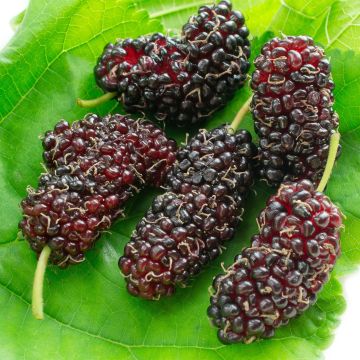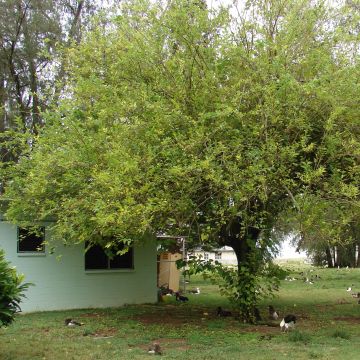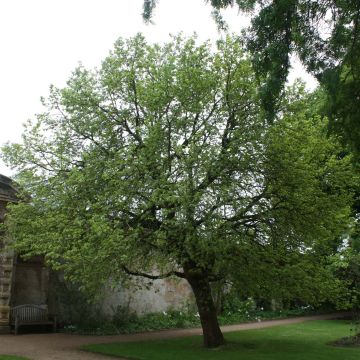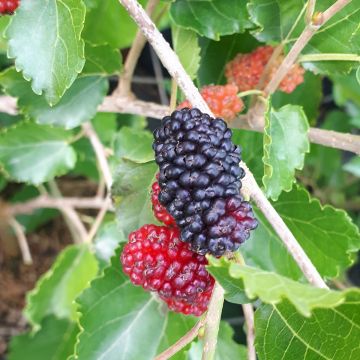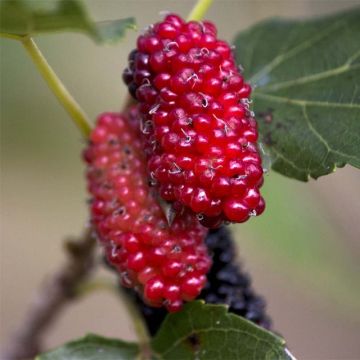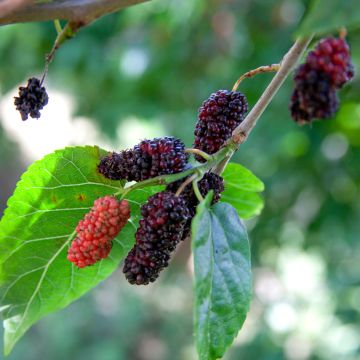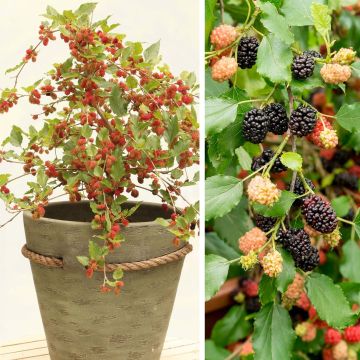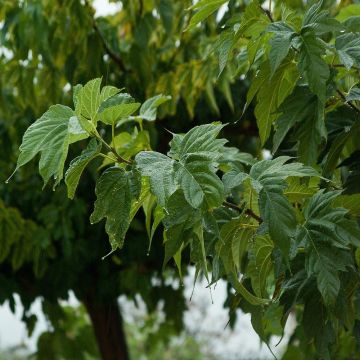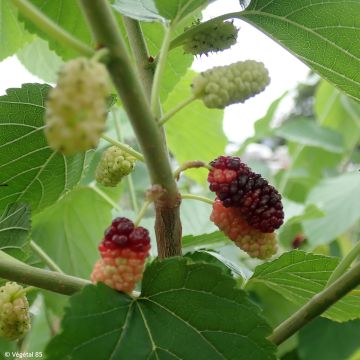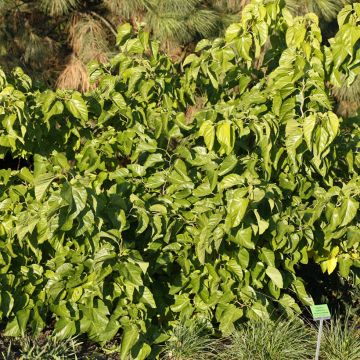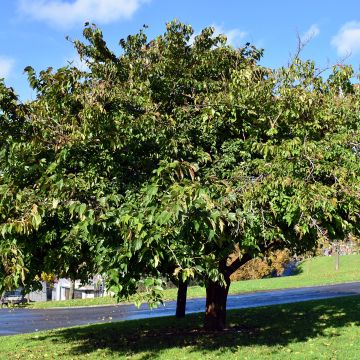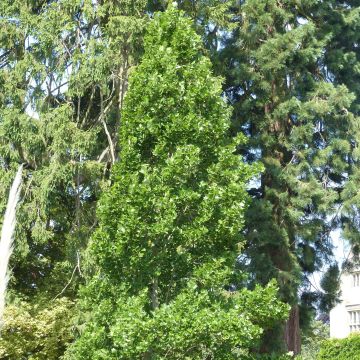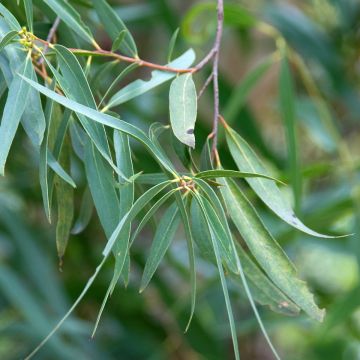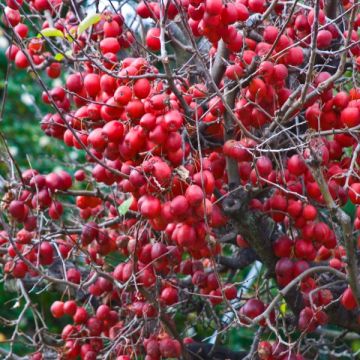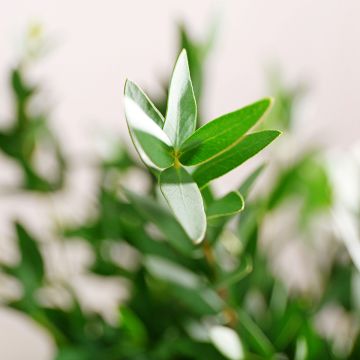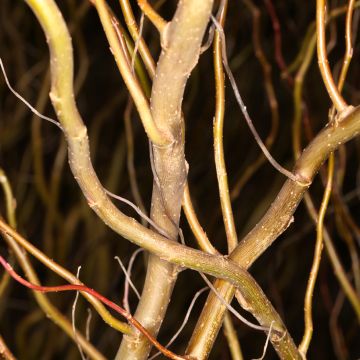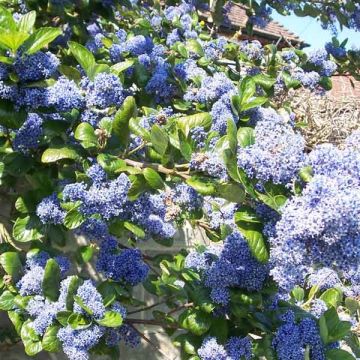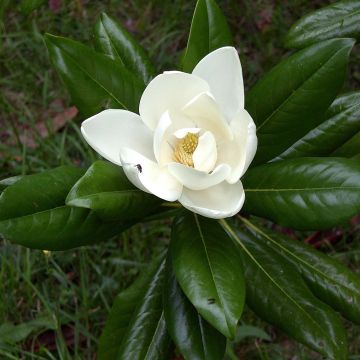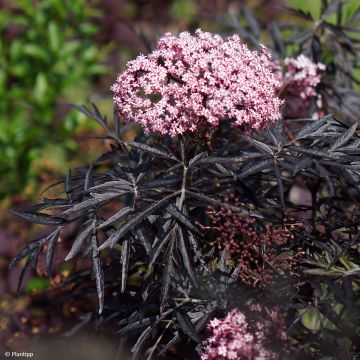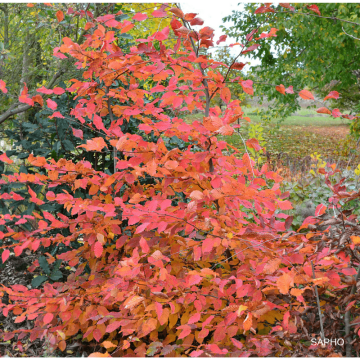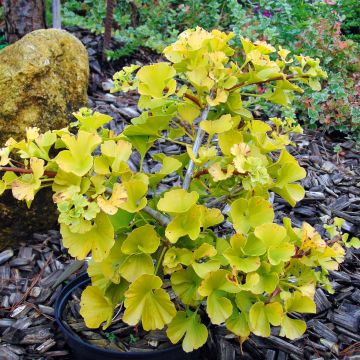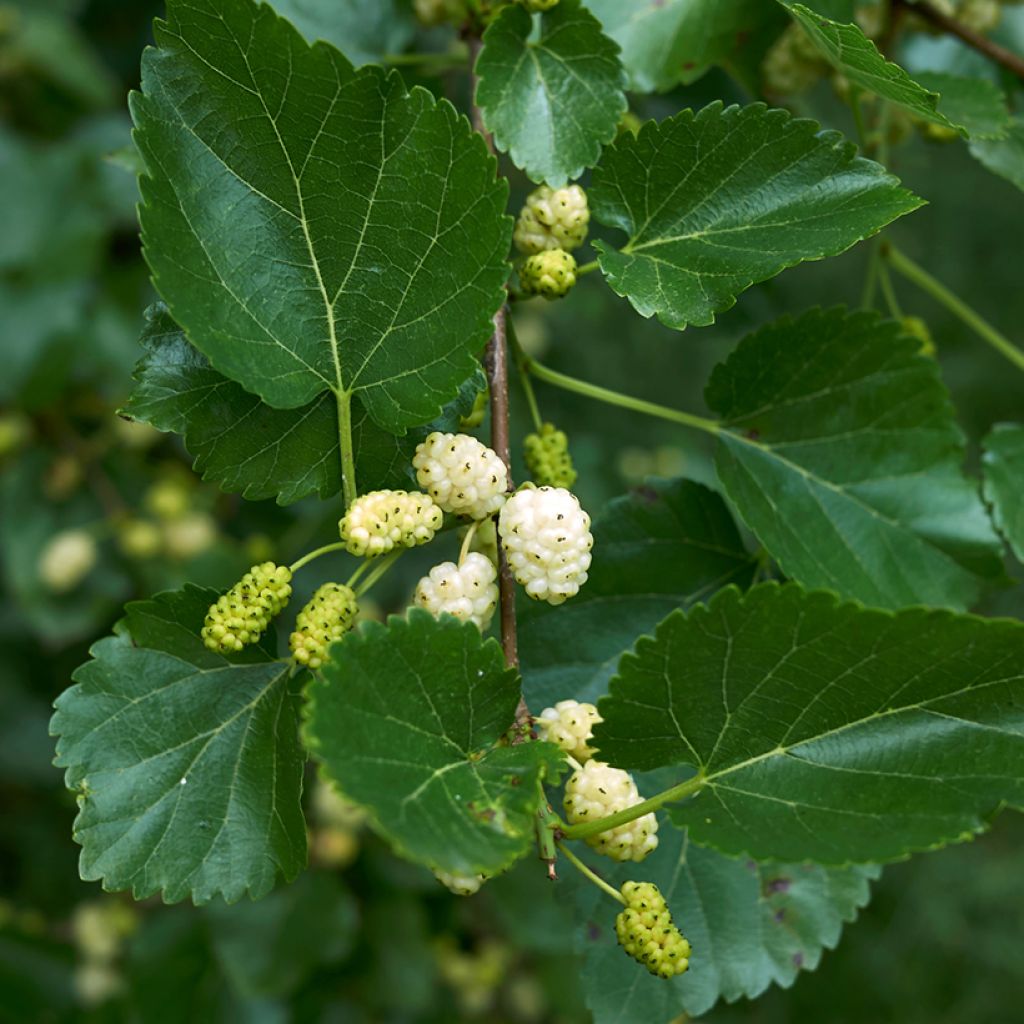

Morus alba Bistro -White Mulberry
Morus alba Bistro -White Mulberry
Morus alba Bistro
White Mulberry, Silkworm Mulberry, Chinese Mulberry
Why not try an alternative variety in stock?
View all →This plant carries a 6 months recovery warranty
More information
We guarantee the quality of our plants for a full growing cycle, and will replace at our expense any plant that fails to recover under normal climatic and planting conditions.
From €5.90 for pickup delivery and €6.90 for home delivery
Express home delivery from €8.90.
Delivery to Corse prohibited: UE law prohibits the import of this plant from mainland France to Corse as part of the fight against Xylella fastidiosa. Please accept our sincere apologies.
More information
Description
Morus alba 'Bistro' is a rare fruit variety of White Mulberry, sought after for its abundant and high-quality production. It is also a beautiful shade tree with abundant deciduous foliage that turns golden yellow in autumn. It produces an abundance of large fruits that are violet to almost black when fully ripe. They are harvested for about 5 weeks, usually in the heart of summer. The fruits are edible, delicious, juicy, and sweet. The 'Bistro' White Mulberry is self-fertile, but cross-pollination produces higher quality fruits. It is therefore advisable to plant another White Mulberry like 'Giant Fruit' nearby.
Morus alba 'Bistro' is a variety of White Mulberry of Polish origin. It is a cultivar derived from the common Chinese Mulberry. This deciduous tree belongs to the Moraceae family and produces latex in its tissues, like all members of its family. Originally from Mongolia and India.
The 'Bistro' White Mulberry forms a tree with a rather short and thick trunk, topped by a widely conical crown. When mature, its dimensions range between 6 and 8 m in height and 5 to 6 m in width. Its growth is rapid during the first years, then slows down. Its Light grey bark cracks to become thicker, and then turns grey-brown. The deciduous leaves are polymorphous, meaning that their appearance can vary depending on their position on the branches. They are usually entire but can be lobed. Each leaf measures 6 to 8 cm in diameter and 10 to 20 cm in length, with an irregularly toothed margin. The shiny upper surface is pale green, turning golden yellow in autumn. The White Mulberry typically develops male or female flowers in different locations on the same plant, usually in May. Its inconspicuous flowering consists of male or female catkins composed of tiny green-yellow flowers. From early July, the female flowers produce ovoid fleshy fruits, measuring 3 to 4 cm in length. They successively change from white to pink and dark violet, almost becoming black when ripe. The fruits of this variety are edible and have a pleasant taste. They are highly sought after by both gardeners and birds. The White Mulberry's root system, both taproot and running, does not tolerate transplanting well. Its vigour requires planting it at a respectable distance from buildings.
Morus alba 'Bistro' thrives in fertile, well-worked, and well-drained soil in a hot and sunny location. It tolerates pollution but not coastal conditions. It can be planted in an orchard or a large fruit hedge, alongside blackthorns, 'Mirabelle de Nancy' plum trees, 'Westerveld' medlar trees, male dogwoods, and other saskatoon juneberries, to the delight of birds. It can also be a beautiful specimen planted alone in the middle of a lawn or near the terrace to provide much-needed shade in summer. The fruit of the 'Bistro' White Mulberry is suitable for direct consumption, drying, freezing, and various preparations such as jams, preserves, and syrups.
Report an error about the product description
Plant habit
Fruit
Flowering
Foliage
Botanical data
Morus
alba
Bistro
Moraceae
White Mulberry, Silkworm Mulberry, Chinese Mulberry
Cultivar or hybrid
Other Morus - Mulberry
Planting and care
Morus alba 'Bistro' should be planted in spring or autumn in well-drained, rather fertile and deep soil, not too chalky or too acidic, and in full sun. Be careful not to damage its fleshy and brittle roots during planting. It tolerates cold weather and is well adapted to hot and dry summers once well-established. However, it will be more productive if the soil does not dry out too much in summer. Prune to maintain a beautiful shape. It may be susceptible to rust, hemp or powdery mildew, in which case treat with Bordeaux mixture.
Planting period
Intended location
Care
This item has not been reviewed yet - be the first to leave a review about it.
Trees and large shrubs
Haven't found what you were looking for?
Hardiness is the lowest winter temperature a plant can endure without suffering serious damage or even dying. However, hardiness is affected by location (a sheltered area, such as a patio), protection (winter cover) and soil type (hardiness is improved by well-drained soil).

Photo Sharing Terms & Conditions
In order to encourage gardeners to interact and share their experiences, Promesse de fleurs offers various media enabling content to be uploaded onto its Site - in particular via the ‘Photo sharing’ module.
The User agrees to refrain from:
- Posting any content that is illegal, prejudicial, insulting, racist, inciteful to hatred, revisionist, contrary to public decency, that infringes on privacy or on the privacy rights of third parties, in particular the publicity rights of persons and goods, intellectual property rights, or the right to privacy.
- Submitting content on behalf of a third party;
- Impersonate the identity of a third party and/or publish any personal information about a third party;
In general, the User undertakes to refrain from any unethical behaviour.
All Content (in particular text, comments, files, images, photos, videos, creative works, etc.), which may be subject to property or intellectual property rights, image or other private rights, shall remain the property of the User, subject to the limited rights granted by the terms of the licence granted by Promesse de fleurs as stated below. Users are at liberty to publish or not to publish such Content on the Site, notably via the ‘Photo Sharing’ facility, and accept that this Content shall be made public and freely accessible, notably on the Internet.
Users further acknowledge, undertake to have ,and guarantee that they hold all necessary rights and permissions to publish such material on the Site, in particular with regard to the legislation in force pertaining to any privacy, property, intellectual property, image, or contractual rights, or rights of any other nature. By publishing such Content on the Site, Users acknowledge accepting full liability as publishers of the Content within the meaning of the law, and grant Promesse de fleurs, free of charge, an inclusive, worldwide licence for the said Content for the entire duration of its publication, including all reproduction, representation, up/downloading, displaying, performing, transmission, and storage rights.
Users also grant permission for their name to be linked to the Content and accept that this link may not always be made available.
By engaging in posting material, Users consent to their Content becoming automatically accessible on the Internet, in particular on other sites and/or blogs and/or web pages of the Promesse de fleurs site, including in particular social pages and the Promesse de fleurs catalogue.
Users may secure the removal of entrusted content free of charge by issuing a simple request via our contact form.
The flowering period indicated on our website applies to countries and regions located in USDA zone 8 (France, the United Kingdom, Ireland, the Netherlands, etc.)
It will vary according to where you live:
- In zones 9 to 10 (Italy, Spain, Greece, etc.), flowering will occur about 2 to 4 weeks earlier.
- In zones 6 to 7 (Germany, Poland, Slovenia, and lower mountainous regions), flowering will be delayed by 2 to 3 weeks.
- In zone 5 (Central Europe, Scandinavia), blooming will be delayed by 3 to 5 weeks.
In temperate climates, pruning of spring-flowering shrubs (forsythia, spireas, etc.) should be done just after flowering.
Pruning of summer-flowering shrubs (Indian Lilac, Perovskia, etc.) can be done in winter or spring.
In cold regions as well as with frost-sensitive plants, avoid pruning too early when severe frosts may still occur.
The planting period indicated on our website applies to countries and regions located in USDA zone 8 (France, United Kingdom, Ireland, Netherlands).
It will vary according to where you live:
- In Mediterranean zones (Marseille, Madrid, Milan, etc.), autumn and winter are the best planting periods.
- In continental zones (Strasbourg, Munich, Vienna, etc.), delay planting by 2 to 3 weeks in spring and bring it forward by 2 to 4 weeks in autumn.
- In mountainous regions (the Alps, Pyrenees, Carpathians, etc.), it is best to plant in late spring (May-June) or late summer (August-September).
The harvesting period indicated on our website applies to countries and regions in USDA zone 8 (France, England, Ireland, the Netherlands).
In colder areas (Scandinavia, Poland, Austria...) fruit and vegetable harvests are likely to be delayed by 3-4 weeks.
In warmer areas (Italy, Spain, Greece, etc.), harvesting will probably take place earlier, depending on weather conditions.
The sowing periods indicated on our website apply to countries and regions within USDA Zone 8 (France, UK, Ireland, Netherlands).
In colder areas (Scandinavia, Poland, Austria...), delay any outdoor sowing by 3-4 weeks, or sow under glass.
In warmer climes (Italy, Spain, Greece, etc.), bring outdoor sowing forward by a few weeks.

































